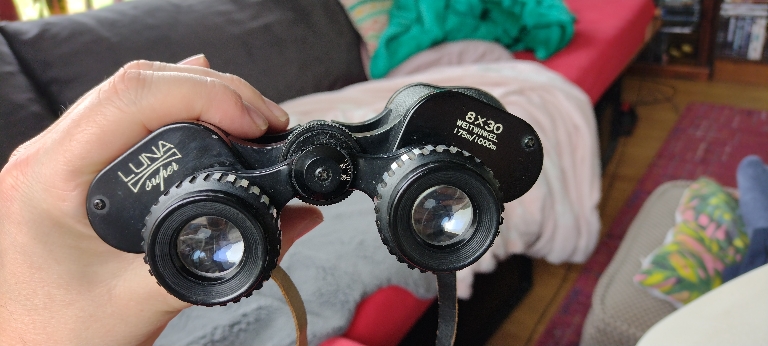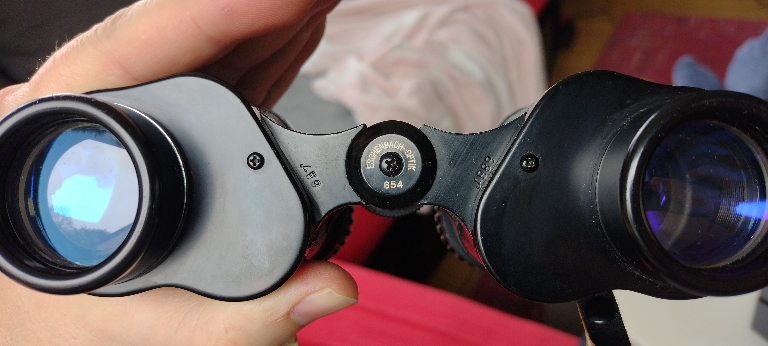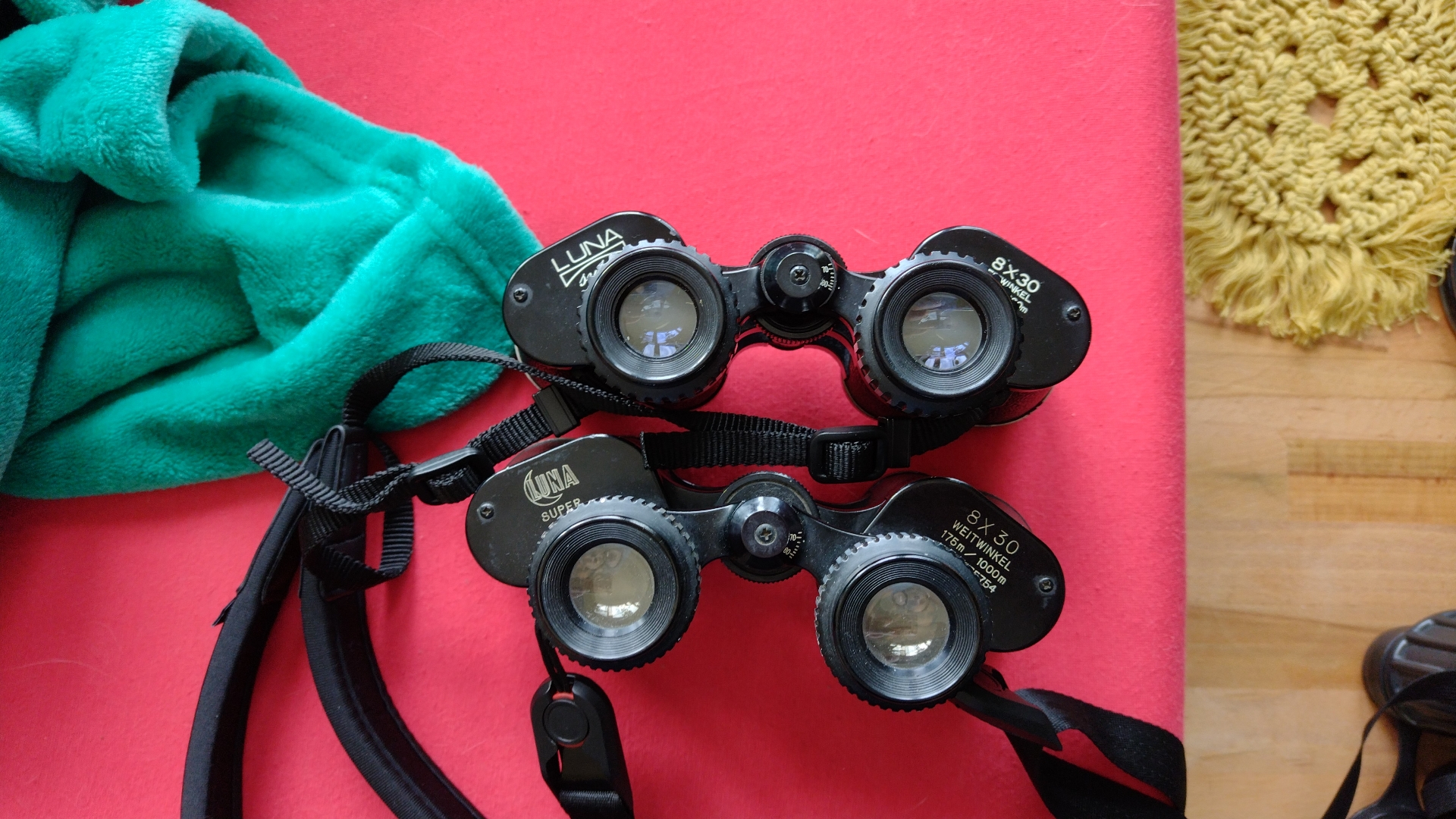Half the price of a Swarovski and just as good or better optically.
Explain, please.
Half the price of a Swarovski and just as good or better optically.

Come on Canip, you’ve been around a long time, you know the game here. He’s got a swift not a Swaro, if it was the other way around what do you think the comment would be😜Explain, please.







Earlier E Series': Numbering, Production and Popularity
In contrast to the EII, previous versions of the E series were far more popular, and increasingly so as one goes back in time - when they were Nikon's premium binocular line
Bear in mind that prior to the introduction of phase coating on roof prism binoculars (developed and first used by Zeiss in 1988), it was not possible for roof prisms to equal the sharpness of Porro prisms
And the availability of affordable roof prism models of good optical quality, that we now take for granted, did not commence until the first decade of the 21st century
So as context for many, and nostalgia for some . . .
A) Multi Coated E Series - from 1988 to 1998 (90k+ over 11 years)
- 8x30 from 400k: 400,174 - 448,643+ (48k+)
- 10x35 from 600k: 600,542 to 615,676+ (15k+)
- 7x35 from 200k: 200,347 to 217,591+ (17k+)
- 12x40 from 800k: 800,204 to 811,718+ (11k+)
B) Single Coated E Series - 1978 to 1987 (180k+ over 10 years)
- 8x30 from 880k: 880,276 to 936,734+ (56k+)
- 10x35 from 110k: 114,772 to 153,420+ (43k+)
- 7x35 from 770k: 770,100 to 818,427+ (48k+)
- 12x40 from 660k: 661,428 to 693,341+ (33k+)
. . . the numbering range is from my observations

Thanks for the information John. I ended up giving them to a client of mine as he gave me a personalised number plate and I felt like I owed him, he has a fleet of classic cars so I thought they'd go well - and he was insistent that he had a goshawk coming into this garden so I thought with some decent bins he may admit it was a Sparrow hawk once he could see it!Hi Will (post #33),
Your multicoated Nikon 10x35 E is within the first 5,000 units produced, so likely 1989 or 1990 at the latest:
It has the same eyepiece and prisms as the much better known 8x30 E, with the magnification increased by lengthening the objectives.
See Rogers’s review of the 8x30 at: Nikon 8x30 E Review
In terms of coatings, they did seem to improve over the life of the multicoated E production
e.g. see various information from Gijs' tests in post #3, in the thread above that I linked to.
John
Hi John,Hi Will (post #33),
Your multicoated Nikon 10x35 E is within the first 5,000 units produced, so likely 1989 or 1990 at the latest:
It has the same eyepiece and prisms as the much better known 8x30 E, with the magnification increased by lengthening the objectives.
See Rogers’s review of the 8x30 at: Nikon 8x30 E Review
John
I picked up a Fujinon FMTR-SX 7x50 and love them. The IF takes some getting used to, but they are a pleasure to look thoughIf you can tolerate an IF binocular and a little weight, the Fujinon FMTR-SX 7x50 is an awesome binocular. The close focus is 32 feet, and anything beyond that to infinity you won't have to worry about focusing anyway! For $700 they are a bargain. Fujinon also made a FMTR-SX 8x30 which were a good IF binocular but being discontinued it is hard to find now.
As described in other threads, the phrase "depth of field depends only on magnification" is an urban legend.There has been some past debate about depth of field for binoculars. Tests by experienced observers agreed with calculations that depth of field depends only on magnification. ...

Sorry, it's not an urban legend. You may well see a difference between your binoculars, but it is not caused by a difference in DOF.As described in other threads, the phrase "depth of field depends only on magnification" is an urban legend.
I have two 8x binoculars (32 mm and 42 mm) and the difference in depth of field is real. The practice overpower the theory.
I do not know what details can be relevant here.Sorry, it's not an urban legend. You may well see a difference between your binoculars, but it is not caused by a difference in DOF.
The next step is to figure out what's actually causing the difference you see. Can you supply more details?
OK. Waiting for it. Thank you....
I do know a reliable test that uses the size of blur circles rather than subjective impressions. I've posted it a few times. I'll search for one of those posts.

Ted Y,OK. Waiting for it. Thank you.

In the link I posted it was claimed that a smaller entrance pupil of the eye will increase DoF since it increases the focal length of the eye.Secondly, a binoculars exit pupil may decrease the effective size of the eye's entrance pupil if the binocular's exit pupil is smaller than the eye's pupil. Under this condition the focal ratio of the eye is increased just like in a stopped down camera lens and the eye's depth of field increases. In that way a small exit pupil binocular may impose a wider DOF on the eye's optics in low light conditions compared to a large exit pupil binocular.

PhilippOkay, since nobody seems to bother to have the text in my link translated and Henry didn't answer my question in the recent thread about DoF I'll quote Henry and then ask my questions.
In the link I posted it was claimed that a smaller entrance pupil of the eye will increase DoF since it increases the focal length of the eye.
So it was further said that a very bright bino (with better coatings for example) or one with a larger FoV would lead to a smaller entrance pupil of the eye and a greater DoF. That would mean that magnification is not the only factor.
Would that not be the same effect as in your quote, Henry, where however the smaller exit pupil of the bino steps down the entrance pupil of the eye and leads to a larger DoF in low light. So how can both be true? Does a larger exit pupil lead to a smaller entrance pupil of the eye, a longer focal ratio of the eye and therefore to more DoF? Would that mean, if both statements are true, that a larger exit pupil would increase DoF in daylight and a smaller exit pupil, stepping down the pupil of the eye, lead to a greater DoF in low light? If one or both statements are true, how is magnification then the only factor determining DoF?
